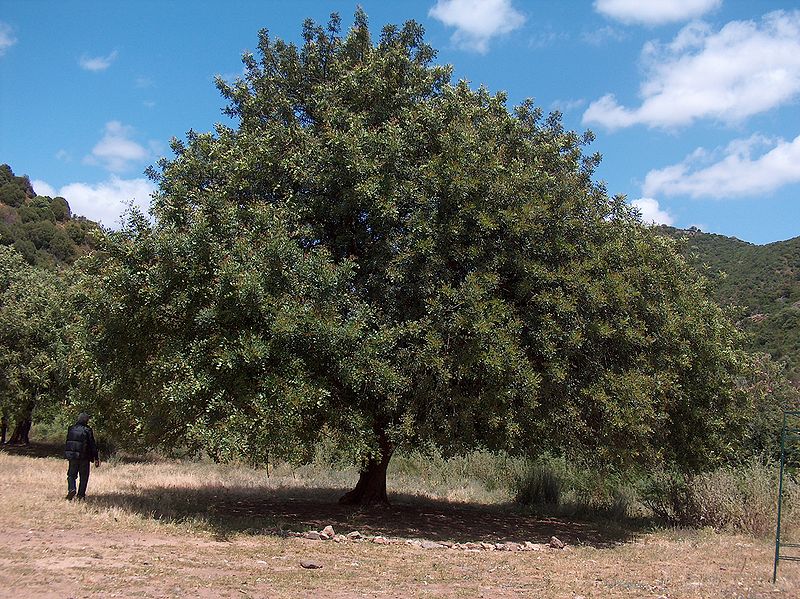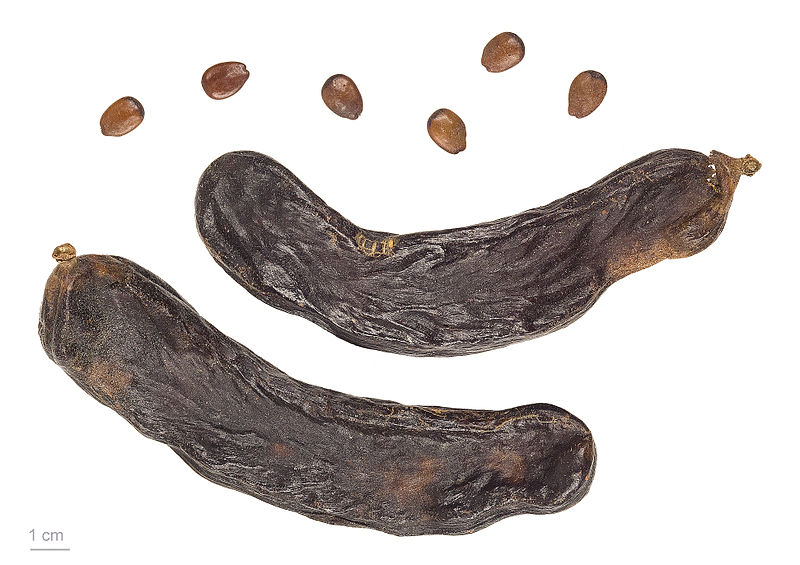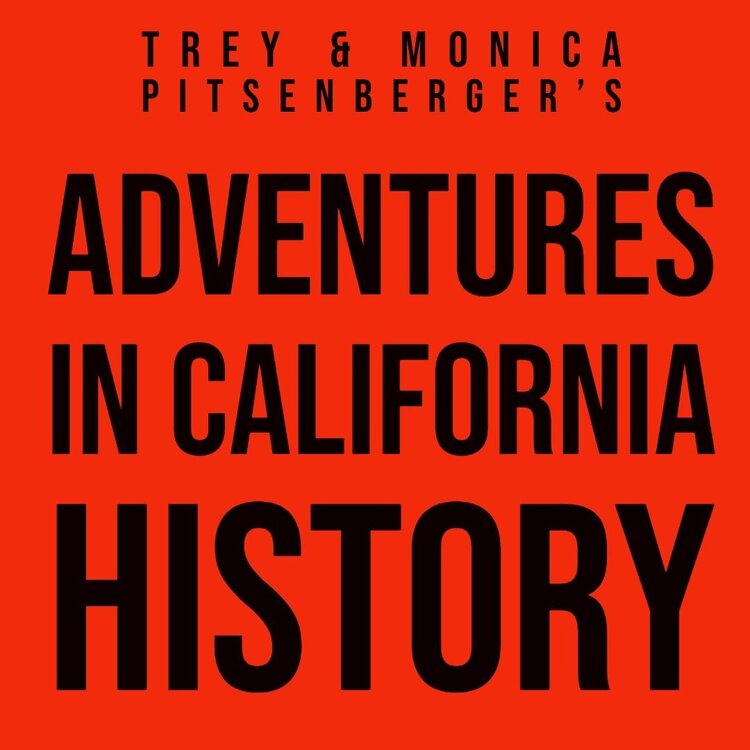 The carob tree is a landscape tree here in California, but in the Mediterranean region it grown as a food crop. Carob is mildly sweet and is used in powdered, chip, or syrup form as an ingredient in cakes and cookies, and in chocolate substitute. Since chocolate contains theobromine, which is poisonous to some mammals, and carob does not, it is used to make chocolate-flavored treats for dogs. The island of Malta has a liqueur made from carob, Zeppi’s Harruba. I would love to try this someday.
The carob tree is a landscape tree here in California, but in the Mediterranean region it grown as a food crop. Carob is mildly sweet and is used in powdered, chip, or syrup form as an ingredient in cakes and cookies, and in chocolate substitute. Since chocolate contains theobromine, which is poisonous to some mammals, and carob does not, it is used to make chocolate-flavored treats for dogs. The island of Malta has a liqueur made from carob, Zeppi’s Harruba. I would love to try this someday.
The carob tree was known in Antiquity and was introduced very early in Greece and is possible indigenous to Crete. During St.John the Baptist's sojourn in the desert he fed himself on the nourishing pods of the carob, along with locusts, and honey.
Ceratonia siliqua's common name, Carob, alludes to the Greek word "kerátion" literally meaning, a small horn. This is the shape of the carob pod which holds inside the carob seed, used as food. It's this seed that shares it's history with the weight used to measure gems, carat.
The seeds are remarkably uniform in both size and weight, varying within very definite limits. Ceratonia siliqua, the  scientific name of the carob tree, derives from the Greek kerátion, "fruit of the carob" (from keras "horn"), and Latin siliqua "pod, carob." The term "carat", the unit by which precious metal and stone weight is measured, is also derived from the Greek word keráti?n, alluding to an ancient practice of weighing gold and gemstones against the seeds of the carob tree by people in the Middle East. The system was eventually standardized, and one carat was fixed at 0.2 grams.
scientific name of the carob tree, derives from the Greek kerátion, "fruit of the carob" (from keras "horn"), and Latin siliqua "pod, carob." The term "carat", the unit by which precious metal and stone weight is measured, is also derived from the Greek word keráti?n, alluding to an ancient practice of weighing gold and gemstones against the seeds of the carob tree by people in the Middle East. The system was eventually standardized, and one carat was fixed at 0.2 grams.
In late Roman times, the pure gold coin known as the solidus weighed 24 carat seeds (about 4.5 grams). As a result, the carat also became a measure of purity for gold. Thus 24-carat gold means 100% pure, 12-carat gold means the alloy contains 50% gold.
